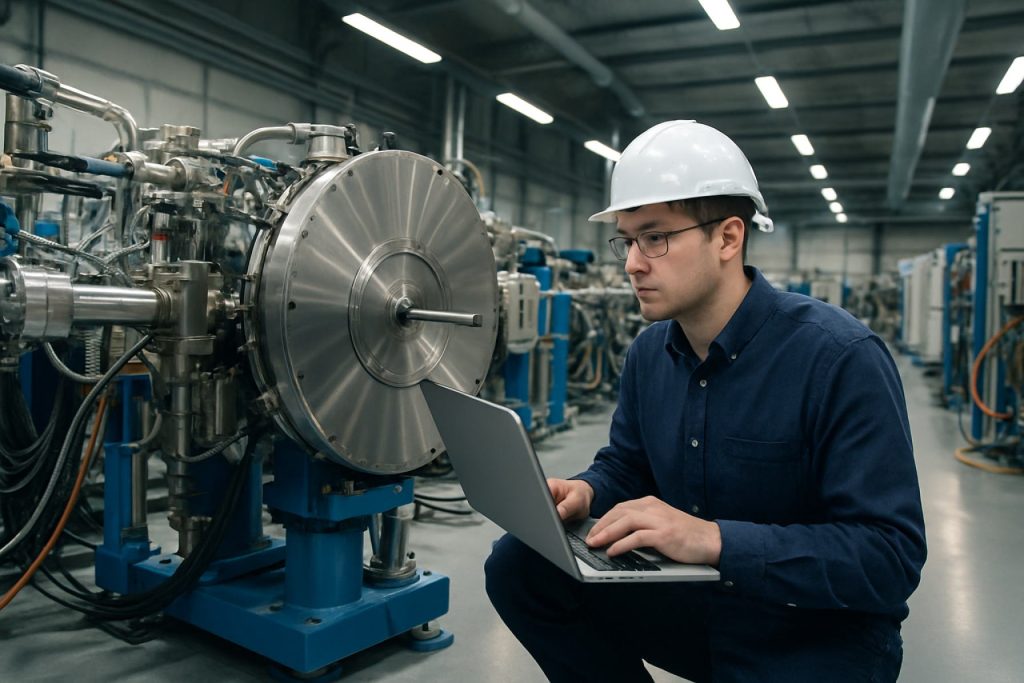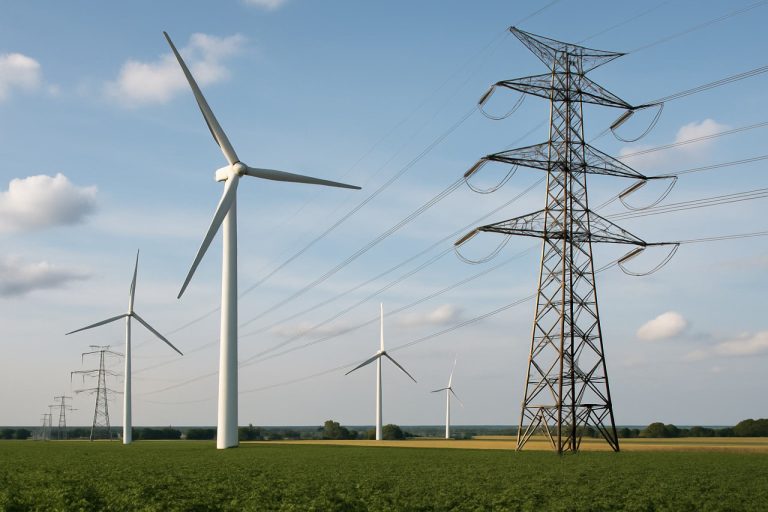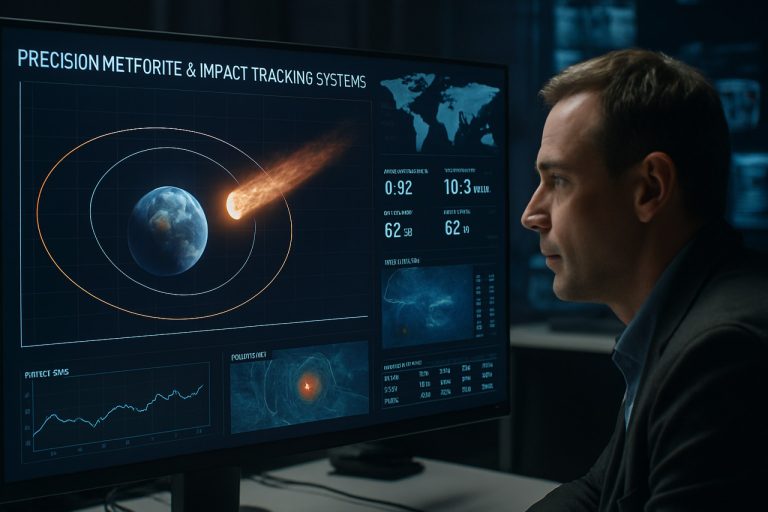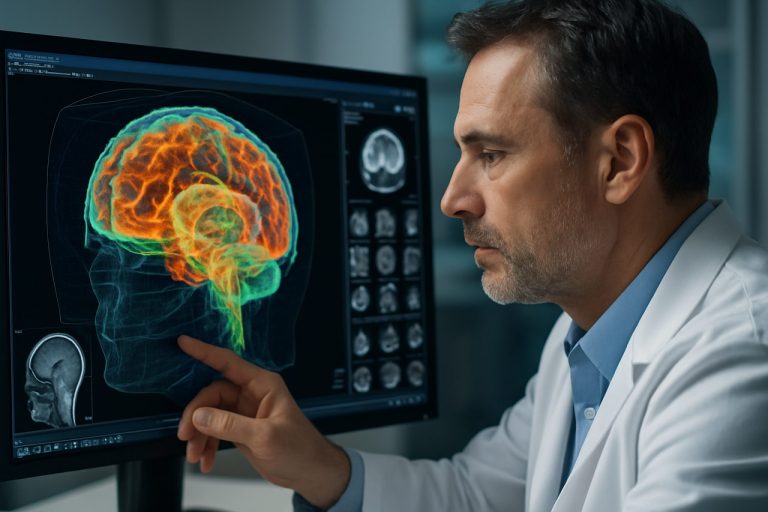
Neutron Scattering Instrumentation in 2025: Unveiling the Next Era of Precision, Innovation, and Global Expansion. Explore How Advanced Technologies and Strategic Investments Are Shaping the Future of Materials Science and Industry.
- Executive Summary: Key Trends and Market Outlook (2025–2030)
- Global Market Size, Growth Forecasts, and Regional Hotspots
- Technological Innovations: Next-Generation Neutron Sources and Detectors
- Major Players and Strategic Collaborations (e.g., ess.eu, ornl.gov, nist.gov)
- Applications Across Materials Science, Energy, and Life Sciences
- Government Funding, Policy Initiatives, and International Partnerships
- Challenges: Cost, Infrastructure, and Skilled Workforce Shortages
- Sustainability and Green Initiatives in Neutron Instrumentation
- Emerging Markets and Opportunities for New Entrants
- Future Outlook: Disruptive Technologies and Long-Term Industry Roadmap
- Sources & References
Executive Summary: Key Trends and Market Outlook (2025–2030)
The neutron scattering instrumentation sector is poised for significant evolution between 2025 and 2030, driven by expanding research applications, major facility upgrades, and technological innovation. Neutron scattering, a cornerstone technique for probing material structure and dynamics at the atomic scale, continues to benefit from sustained investment in both national laboratories and commercial instrument development.
A key trend is the ongoing modernization and expansion of large-scale neutron sources. In Europe, the European Spallation Source ERIC (ESS) in Sweden is entering advanced commissioning, with first user experiments anticipated in 2025–2026. ESS is set to become the world’s most powerful pulsed neutron source, offering unprecedented flux and enabling new classes of experiments. In the United States, the Oak Ridge National Laboratory (ORNL) continues to upgrade its Spallation Neutron Source (SNS), with the Second Target Station project expected to come online later in the decade, further expanding instrument capacity and performance.
Instrument manufacturers are responding to these facility upgrades with next-generation detector technologies, advanced sample environments, and automation. Companies such as Anton Paar and Oxford Instruments are prominent suppliers of specialized sample environments, cryogenics, and magnet systems tailored for neutron experiments. Detector innovation is also accelerating, with firms like RI Research Instruments and Heidelberg Instruments contributing to the development of high-efficiency, large-area neutron detectors to address the global shortage of helium-3 and improve data quality.
The Asia-Pacific region is also increasing its presence, with China’s Institute of High Energy Physics and Japan’s J-PARC Center investing in new beamlines and instrument upgrades. These developments are expected to boost regional research output and foster international collaboration.
Looking ahead, the market outlook for neutron scattering instrumentation is robust. Demand is fueled by growth in materials science, energy research, pharmaceuticals, and quantum technologies. The next five years will likely see increased automation, digital integration, and user accessibility, as facilities and manufacturers strive to broaden the user base beyond traditional academic and government sectors. Strategic partnerships between instrument suppliers and research facilities are expected to accelerate innovation and reduce time-to-market for new technologies.
In summary, the period from 2025 to 2030 will be marked by facility expansions, technological advancements, and a broadening application landscape, positioning neutron scattering instrumentation as a critical enabler of scientific and industrial progress worldwide.
Global Market Size, Growth Forecasts, and Regional Hotspots
The global market for neutron scattering instrumentation is poised for steady growth through 2025 and the following years, driven by expanding research infrastructure, increased investment in materials science, and the modernization of national laboratories. Neutron scattering instruments—such as diffractometers, spectrometers, and imaging systems—are critical for probing the atomic and magnetic structure of materials, with applications spanning energy, pharmaceuticals, advanced manufacturing, and quantum technologies.
As of 2025, the market is anchored by major neutron research facilities in North America, Europe, and Asia-Pacific. The United States remains a key player, with the Oak Ridge National Laboratory (ORNL) operating the Spallation Neutron Source (SNS), one of the world’s most intense pulsed neutron sources. ORNL continues to invest in new instruments and upgrades, including the Second Target Station project, which is expected to further expand instrument capacity and user access in the coming years. In Europe, the European Spallation Source (ESS) in Sweden is nearing completion, with first experiments anticipated in the mid-2020s. ESS is set to become the world’s most powerful neutron source, significantly boosting regional and global research capabilities.
Asia-Pacific is also witnessing robust growth, led by Japan’s Japan Proton Accelerator Research Complex (J-PARC) and China’s Institute of High Energy Physics (IHEP), which operates the China Spallation Neutron Source (CSNS). Both facilities are expanding their instrument suites and user programs, reflecting strong government support for neutron science. These regional hotspots are complemented by ongoing upgrades at established centers such as the Science and Technology Facilities Council (STFC) in the UK, which manages the ISIS Neutron and Muon Source.
On the supplier side, leading manufacturers of neutron scattering instrumentation include Bruker, which provides advanced neutron diffractometers and detectors, and Mirrotron, a specialist in neutron optical components and instrument engineering. Anton Paar and Tesscorn Systems also supply key components and integrated systems for neutron research. These companies are responding to demand for higher resolution, automation, and remote operation capabilities, trends accelerated by the COVID-19 pandemic and the push for more efficient facility use.
Looking ahead, the global neutron scattering instrumentation market is expected to grow at a moderate pace, with the Asia-Pacific region likely to see the fastest expansion due to new facility construction and increased R&D funding. The commissioning of ESS and upgrades at SNS and CSNS will further stimulate demand for state-of-the-art instruments and ancillary technologies, positioning neutron scattering as a cornerstone of advanced materials research worldwide.
Technological Innovations: Next-Generation Neutron Sources and Detectors
The field of neutron scattering instrumentation is undergoing significant transformation, driven by the development of next-generation neutron sources and advanced detector technologies. As of 2025, several major international facilities are spearheading these advancements, with a focus on increasing neutron flux, improving resolution, and enhancing data acquisition capabilities.
A landmark development is the commissioning and ramp-up of the European Spallation Source ERIC (ESS) in Lund, Sweden. ESS is designed to be the world’s most powerful pulsed neutron source, with a 5 MW proton beam and a suite of state-of-the-art instruments. The facility is expected to deliver first user experiments in 2025, offering unprecedented neutron brightness and enabling experiments previously not feasible. ESS’s instrument suite incorporates modular, high-throughput detector systems and advanced chopper technologies, setting new standards for time-of-flight and imaging applications.
In the United States, the Oak Ridge National Laboratory (ORNL) continues to upgrade its Spallation Neutron Source (SNS) and High Flux Isotope Reactor (HFIR). The Second Target Station (STS) project at SNS, scheduled for completion in the late 2020s, will introduce new instrument concepts and detector arrays, including large-area scintillator and boron-10-based detectors, to address the global shortage of helium-3. These upgrades are expected to significantly expand the range and throughput of neutron scattering experiments.
Detector technology is also advancing rapidly. Companies such as Mirrotron Ltd. and Berthold Technologies are developing high-efficiency neutron detectors using boron-10 and lithium-6, which offer improved gamma discrimination and higher count rates. These detectors are being integrated into new and existing instruments to meet the demands of high-flux sources and complex experimental geometries.
Automation and digitalization are further shaping the landscape. Instrument control systems are increasingly adopting open-source platforms and real-time data processing, as seen in the collaborative efforts at ESS and ORNL. This enables faster experiment turnaround and more sophisticated data analysis pipelines, supporting the growing user base from materials science, biology, and energy research.
Looking ahead, the next few years will see the maturation of these technologies, with a focus on reliability, scalability, and user accessibility. The integration of artificial intelligence for experiment optimization and data interpretation is anticipated, further enhancing the capabilities of neutron scattering instrumentation and broadening its scientific impact.
Major Players and Strategic Collaborations (e.g., ess.eu, ornl.gov, nist.gov)
The neutron scattering instrumentation sector in 2025 is characterized by the active involvement of major research facilities, specialized manufacturers, and strategic collaborations that drive technological advancement and global access. Among the most influential players are large-scale research centers, including the European Spallation Source (ESS), Oak Ridge National Laboratory (ORNL), and the National Institute of Standards and Technology (NIST). These organizations not only operate world-leading neutron sources but also spearhead the development and deployment of next-generation instruments.
The European Spallation Source, based in Lund, Sweden, is set to become the world’s most powerful neutron source, with first user experiments anticipated in the mid-2020s. ESS is collaborating with European partners to deliver a suite of state-of-the-art instruments, focusing on high flux, advanced detector technologies, and automation. Its partnerships with national laboratories and instrument consortia across Europe are central to its mission, fostering shared expertise and resource pooling.
In the United States, Oak Ridge National Laboratory operates the Spallation Neutron Source (SNS) and the High Flux Isotope Reactor (HFIR), both of which are undergoing upgrades to expand their scientific capabilities. ORNL’s Neutron Sciences Directorate is collaborating with instrument manufacturers and academic institutions to develop new sample environments, high-resolution detectors, and data acquisition systems. These efforts are supported by strategic alliances with global suppliers and user communities, ensuring that instrument development aligns with emerging research needs.
The National Institute of Standards and Technology Center for Neutron Research (NCNR) continues to play a pivotal role in the U.S. neutron scattering landscape. NIST is investing in instrument modernization and digital infrastructure, and it maintains partnerships with universities and industry to broaden access and foster innovation in neutron instrumentation.
On the manufacturing side, companies such as Mirrotron Ltd. (Hungary) and Bergoz Instrumentation (France) are recognized for their specialized neutron optics, detectors, and beamline components. These firms frequently collaborate with major research facilities to co-develop custom solutions, reflecting the sector’s reliance on close supplier-user relationships.
Looking ahead, the neutron scattering instrumentation field is expected to see further integration of digital technologies, increased automation, and expanded international collaboration. The ongoing upgrades at major facilities and the commissioning of new sources like ESS will likely drive demand for innovative instrumentation and foster new strategic partnerships across the global research community.
Applications Across Materials Science, Energy, and Life Sciences
Neutron scattering instrumentation continues to play a pivotal role in advancing research across materials science, energy, and life sciences. As of 2025, global investments in neutron sources and instrument upgrades are enabling unprecedented insights into atomic and molecular structures, dynamics, and interactions. These advances are particularly significant for the development of new materials, energy storage solutions, and biological understanding.
In materials science, neutron scattering is indispensable for probing the structure and behavior of complex alloys, polymers, and nanomaterials. Facilities such as the Oak Ridge National Laboratory (ORNL) in the United States and the Helmholtz-Zentrum Berlin in Germany are at the forefront, offering state-of-the-art neutron diffractometers and spectrometers. These instruments allow researchers to study phenomena such as phase transitions, magnetic ordering, and stress/strain in engineering components, which are critical for aerospace, automotive, and electronics industries.
In the energy sector, neutron scattering is increasingly applied to investigate battery materials, hydrogen storage, and catalysts for sustainable energy production. The ISIS Neutron and Muon Source in the UK and the European Spallation Source (ESS) in Sweden are expanding their instrument suites to address these challenges. For example, neutron imaging and tomography are being used to visualize lithium distribution in batteries and to optimize fuel cell components, directly impacting the development of next-generation energy technologies.
Life sciences benefit from neutron scattering’s unique sensitivity to light elements, especially hydrogen, making it invaluable for studying biological macromolecules, membranes, and drug interactions. The Institut Laue-Langevin (ILL) in France and J-PARC in Japan provide advanced small-angle neutron scattering (SANS) and neutron reflectometry instruments. These tools are enabling breakthroughs in understanding protein folding, enzyme mechanisms, and the structure of complex biological assemblies, with direct implications for drug design and disease research.
Looking ahead, the commissioning of new instruments at the ESS and upgrades at established facilities like ORNL and ILL are expected to further enhance resolution, speed, and sample environments. The integration of artificial intelligence and automation in data analysis is also anticipated to accelerate discoveries. As neutron scattering instrumentation evolves, its applications across materials science, energy, and life sciences are set to expand, driving innovation and addressing global challenges in the coming years.
Government Funding, Policy Initiatives, and International Partnerships
Government funding, policy initiatives, and international partnerships are pivotal in shaping the landscape of neutron scattering instrumentation as of 2025 and in the near future. The construction, operation, and upgrading of neutron sources and their associated instrumentation require substantial and sustained investment, often beyond the capacity of single institutions or even countries. As a result, collaborative frameworks and strategic funding mechanisms are central to progress in this field.
In 2025, major government-backed facilities such as the Oak Ridge National Laboratory (ORNL) in the United States, home to the Spallation Neutron Source (SNS), and the ISIS Neutron and Muon Source in the United Kingdom, continue to receive significant public investment. The U.S. Department of Energy (DOE) has maintained robust funding for neutron science, supporting both operational costs and the development of next-generation instruments at SNS and the High Flux Isotope Reactor (HFIR) at ORNL. Similarly, the UK government, through the Science and Technology Facilities Council (STFC), has prioritized upgrades to ISIS, including new detector technologies and expanded user programs.
In Europe, the European Spallation Source ERIC (ESS), a flagship multinational project based in Sweden, is a prime example of international partnership. ESS is co-financed by 13 European countries, with construction and commissioning activities ongoing into 2025. The facility is expected to become the world’s most powerful neutron source, with a suite of advanced instruments designed in collaboration with leading European research institutes and industry partners. The ESS governance model, which pools resources and expertise across borders, is increasingly seen as a template for future large-scale scientific infrastructure.
Policy initiatives are also driving innovation and access. The European Union’s Horizon Europe program continues to allocate funds for neutron instrumentation R&D, user access, and cross-border training. In Asia, Japan’s Japan Proton Accelerator Research Complex (J-PARC) and China’s Institute of High Energy Physics (IHEP) are expanding their neutron capabilities, supported by national science agencies and international collaborations.
Looking ahead, the outlook for neutron scattering instrumentation is shaped by a growing emphasis on open access, data sharing, and interoperability between facilities. International consortia are working to harmonize standards and coordinate upgrades, ensuring that government investments yield maximum scientific return. As global challenges such as energy, health, and materials sustainability intensify, policy frameworks are expected to further prioritize neutron science as a critical tool for innovation.
Challenges: Cost, Infrastructure, and Skilled Workforce Shortages
Neutron scattering instrumentation faces several persistent and emerging challenges as the field advances into 2025 and the coming years. Chief among these are the high costs associated with building and maintaining neutron sources and their associated instruments, the substantial infrastructure requirements, and a growing shortage of skilled personnel.
The capital investment required for neutron scattering facilities is significant. Construction of new spallation sources or reactor-based neutron sources can require expenditures in the range of hundreds of millions to billions of dollars. For example, the Oak Ridge National Laboratory (ORNL) in the United States operates the Spallation Neutron Source (SNS), which has seen ongoing upgrades and expansions to maintain its position as a world-leading facility. Similarly, the European Spallation Source ERIC (ESS) in Sweden, currently in its commissioning phase, represents one of the largest science infrastructure projects in Europe, with a budget exceeding €1.8 billion. These costs are not limited to initial construction; ongoing operation, maintenance, and periodic upgrades to instrumentation and support systems are also substantial.
Infrastructure requirements extend beyond the neutron source itself. Advanced neutron scattering experiments demand highly specialized instruments, such as diffractometers, spectrometers, and sample environments capable of extreme conditions (e.g., high pressure, low temperature, strong magnetic fields). The complexity of these instruments, often custom-built for specific scientific applications, further drives up costs and necessitates long lead times for design, fabrication, and commissioning. Suppliers such as Helmholtz-Zentrum Berlin and Institut Laue-Langevin (ILL) are at the forefront of developing and maintaining such advanced infrastructure, but even these leading organizations face challenges in keeping pace with scientific demand and technological innovation.
A critical and growing concern is the shortage of skilled personnel. The operation of neutron scattering instruments requires expertise in nuclear physics, engineering, data analysis, and instrument design. As many experienced staff at major facilities approach retirement, there is a pressing need to train the next generation of scientists, engineers, and technicians. Initiatives by organizations such as Paul Scherrer Institute and Science and Technology Facilities Council (STFC) in the UK include training programs and international collaborations, but the pace of workforce development is struggling to match the sector’s needs.
Looking ahead, these challenges are likely to intensify as demand for neutron scattering capabilities grows in fields such as materials science, energy storage, and life sciences. Addressing cost, infrastructure, and workforce shortages will require sustained investment, international cooperation, and innovative approaches to training and technology development.
Sustainability and Green Initiatives in Neutron Instrumentation
Sustainability and green initiatives are increasingly shaping the development and operation of neutron scattering instrumentation as the scientific community and facility operators respond to global environmental concerns. In 2025 and the coming years, major neutron research centers and instrument manufacturers are prioritizing energy efficiency, resource conservation, and reduced environmental impact across their operations.
A significant trend is the modernization of neutron sources and instruments to minimize energy consumption. For example, the European Spallation Source ERIC (ESS), currently under construction in Sweden, is designed with sustainability at its core. The ESS facility incorporates energy recovery systems, advanced heat management, and a commitment to using renewable energy sources for its operations. The facility aims to be one of the world’s most sustainable large-scale research infrastructures, with a target of reducing its carbon footprint through both technological innovation and operational practices.
Similarly, the Oak Ridge National Laboratory (ORNL) in the United States, which operates the Spallation Neutron Source (SNS), has implemented a range of green initiatives. These include the use of high-efficiency chiller systems, LED lighting retrofits, and water conservation measures. ORNL is also exploring the integration of renewable energy sources and advanced building management systems to further reduce the environmental impact of its neutron science facilities.
Instrument manufacturers are also contributing to sustainability efforts. Companies such as RI Research Instruments GmbH and Anton Paar GmbH are developing neutron scattering components and sample environments with improved energy efficiency and longer operational lifespans. These manufacturers are increasingly using recyclable materials and designing instruments for easier maintenance and eventual recycling, aligning with circular economy principles.
Another area of focus is the reduction of hazardous materials and waste. Facilities are adopting greener cooling fluids, minimizing the use of rare or toxic elements in instrument construction, and implementing comprehensive recycling programs for electronic and mechanical components. The Institut Laue-Langevin (ILL) in France, for instance, has established protocols for the safe handling and recycling of neutron-activated materials, as well as initiatives to reduce water and energy usage throughout its campus.
Looking ahead, the neutron scattering community is expected to further integrate sustainability into instrument design and facility management. This includes the adoption of digital twins and advanced simulation tools to optimize instrument performance and energy use before physical construction, as well as increased collaboration between facilities to share best practices and jointly develop green technologies. As funding agencies and governments place greater emphasis on environmental responsibility, sustainability will remain a central consideration in the evolution of neutron scattering instrumentation.
Emerging Markets and Opportunities for New Entrants
The neutron scattering instrumentation market is experiencing a period of dynamic growth and transformation, driven by expanding research applications, new facility investments, and increasing global interest in advanced materials characterization. As of 2025, several emerging markets are presenting significant opportunities for new entrants, particularly in regions investing in large-scale neutron sources and in sectors seeking novel analytical capabilities.
Asia-Pacific continues to be a focal point for expansion. China’s commitment to scientific infrastructure is exemplified by the China Spallation Neutron Source (CSNS), which is rapidly scaling its instrument suite and user base. The CSNS is actively procuring and developing new neutron scattering instruments, creating opportunities for both domestic and international suppliers of detectors, sample environments, and data acquisition systems. Similarly, India’s Dhruva reactor and the upcoming India Spallation Neutron Source are fostering a growing ecosystem of local instrument manufacturers and integrators, with government support for technology transfer and joint ventures.
In Europe, the European Spallation Source (ESS) in Sweden is entering advanced commissioning phases, with first experiments expected in the next few years. The ESS represents one of the largest investments in neutron science globally and is driving demand for state-of-the-art instrumentation, including high-resolution diffractometers, spectrometers, and advanced sample environment systems. The ESS’s collaborative procurement model offers entry points for innovative SMEs and technology providers across the continent. Established European companies such as RISE Research Institutes of Sweden and Helmholtz Association are also supporting technology development and partnerships.
North America remains a robust market, anchored by facilities like the Spallation Neutron Source (SNS) and High Flux Isotope Reactor (HFIR) at Oak Ridge National Laboratory. These facilities are undergoing upgrades and instrument expansions, with procurement opportunities for advanced detector technologies, cryogenic systems, and automation solutions. Companies such as Institut Laue-Langevin (ILL) and Oxford Instruments are recognized suppliers of neutron instrumentation and components, with global reach and ongoing collaborations with research facilities.
Emerging application areas—including energy storage, quantum materials, and life sciences—are broadening the user base for neutron scattering, encouraging new entrants to develop specialized sample environments, software, and compact neutron sources. The trend toward modular, user-friendly instruments and digital integration is lowering barriers for smaller technology firms and startups. As governments and research consortia prioritize open access and innovation, the next few years are expected to see increased participation from new players, particularly those offering disruptive technologies or cost-effective solutions tailored to regional needs.
Future Outlook: Disruptive Technologies and Long-Term Industry Roadmap
The future of neutron scattering instrumentation is poised for significant transformation, driven by disruptive technologies and ambitious long-term roadmaps set by leading research facilities and manufacturers. As of 2025, the sector is witnessing a convergence of advanced detector technologies, digitalization, and automation, all aimed at enhancing data quality, throughput, and accessibility for a broader scientific community.
One of the most notable trends is the rapid adoption of next-generation neutron detectors. Traditional helium-3-based detectors are being gradually replaced by alternatives such as boron-10 and lithium-6 technologies, addressing both supply constraints and performance limitations. Major suppliers like Research Instruments GmbH and Oxford Instruments are actively developing and deploying these advanced detector systems, which offer improved spatial resolution and higher count rates, crucial for modern high-flux neutron sources.
Digital transformation is another key driver. Instrumentation is increasingly integrated with sophisticated data acquisition and analysis software, leveraging artificial intelligence and machine learning for real-time experiment optimization. Facilities such as the European Spallation Source (ESS) and Oak Ridge National Laboratory (ORNL) are investing in digital platforms that enable remote experiment control, automated sample environments, and cloud-based data processing. These advancements are expected to democratize access to neutron scattering, allowing researchers worldwide to participate in experiments without being physically present at the facility.
Looking ahead, the industry roadmap is shaped by the commissioning of new high-brightness neutron sources and the upgrade of existing facilities. The ESS, set to become the world’s most powerful neutron source, is scheduled to ramp up operations through the latter half of the 2020s, with a suite of state-of-the-art instruments designed for unprecedented sensitivity and speed. Similarly, the Paul Scherrer Institute and Helmholtz-Zentrum Berlin are pursuing upgrades to their neutron instrumentation, focusing on modularity, automation, and sustainability.
In the long term, disruptive concepts such as compact accelerator-driven neutron sources and hybrid quantum-classical data analysis are under exploration. These could enable decentralized, laboratory-scale neutron scattering capabilities and further accelerate materials discovery and innovation. The collaborative efforts among instrument manufacturers, research institutions, and user communities will be pivotal in realizing these visions, ensuring that neutron scattering remains at the forefront of analytical science well into the next decade.
Sources & References
- European Spallation Source ERIC
- Oak Ridge National Laboratory
- Anton Paar
- Oxford Instruments
- Heidelberg Instruments
- Institute of High Energy Physics
- J-PARC Center
- Oak Ridge National Laboratory
- European Spallation Source
- Japan Proton Accelerator Research Complex
- Institute of High Energy Physics
- Bruker
- Mirrotron
- Tesscorn Systems
- European Spallation Source ERIC
- Spallation Neutron Source
- Berthold Technologies
- National Institute of Standards and Technology (NIST)
- Bergoz Instrumentation
- Helmholtz-Zentrum Berlin
- ISIS Neutron and Muon Source
- Institut Laue-Langevin
- Institute of High Energy Physics
- Paul Scherrer Institute
- Helmholtz Association



